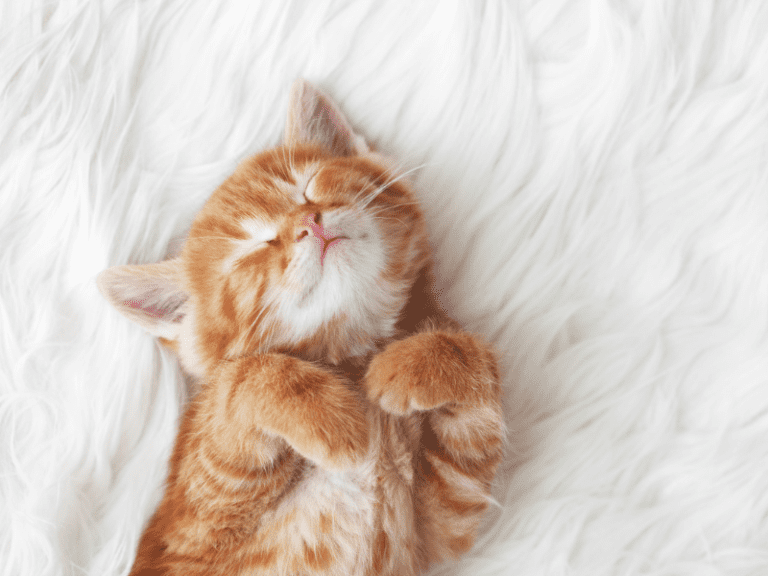Cat Grooming: Why Do Cats Groom Themselves?
FULL DISCLOSURE: The links I share in this course ARE my affiliate links. This means I earn a commission, at no extra cost to you. In fact, sometimes you’ll get a discount or free credits just FOR using my link. 🙂
Looking for more pet tips? Join my email list to be notified every time I post!
If you're a cat parent, you know that your fur baby is always primping and preening. But what's the deal with all that grooming?
Is it just vanity, or is there more to it than meets the eye?
Well, hold on to your whiskers, because we're about to spill the beans on everything you need to know about cat grooming!
The Significance of Cat Grooming

First things first, let's talk about why cats spend so much time grooming themselves. Sure, it keeps them looking sleek and stylish, but there's a lot more to it than that.
The Benefits of Cat Grooming for Hygiene and Health
By removing dirt and debris from their fur, cats reduce their risk of skin irritations and infections. Plus, regular grooming can help you spot any lumps, bumps, or wounds that may require veterinary attention.
Regulating Body Temperature
As any cat parent knows, our feline friends are masters of finding the perfect spot to curl up and take a nap. But did you know that grooming plays a key role in helping cats regulate their body temperature?
By licking their fur, cats spread their saliva over their coat, which helps to cool them down in hot weather. And in cold weather, grooming helps to fluff up their fur and create a layer of insulation to keep them warm.
Grooming for Mental and Emotional Wellbeing
We all know that feeling of satisfaction that comes from taking a nice, long shower after a stressful day. Well, for cats, grooming serves a similar purpose. By licking and grooming themselves, cats release endorphins that help to reduce stress and anxiety. For cats who groom each other, like those in a multi-cat household, grooming can serve as a bonding activity that helps to strengthen their social connections.
The Social Aspect of Cat Grooming

If you've ever seen two cats grooming each other, you know that it's a pretty adorable sight. Beyond just being cute, grooming is actually an important social activity for cats.
By grooming each other, cats are reinforcing their social bonds and showing affection towards one another. For cats who don't get along so well, grooming can actually help to diffuse tensions and reduce aggressive behavior.
The Role of Cat Grooming in Establishing Social Hierarchy
Cats may be cute and cuddly, but they're also fiercely independent creatures with their own unique social structures. Grooming plays a big role in establishing and maintaining those structures.
In multi-cat households, cats will often groom each other as a way of showing deference to a higher-ranking cat. For dominant cats, grooming can be a way of asserting their authority and establishing their place at the top of the pecking order.
The Significance of Cat Grooming for Human-cat Relationships
Grooming is one way that cats show their affection towards their human companions. If your cat licks you or grooms your hair, it's a sign that they trust you and see you as a part of their social group. By returning the favor and grooming your cat, you're strengthening the bond between the two of you and showing them that you care.
The Mechanics of Cat Grooming

Have you ever felt your cat's tongue and wondered why it feels so rough? Well, it turns out that a cat's tongue is covered in tiny, backward-facing spines called papillae. These spines help to remove dirt and debris from the cat's fur, while also distributing natural oils to keep their coat healthy and shiny.
How Cats Groom Different Parts of their Bodies
While cats are pretty flexible creatures, there are certain parts of their body that can be hard for them to reach. That doesn't stop them from trying!
When grooming their face and head, cats will use their paws to wash behind their ears, clean their whiskers, and wipe their faces.
When it comes to hard-to-reach areas like their backs and tails, cats will often use contortionist-like maneuvers to lick and groom themselves.
The Importance of Cat Grooming Habits in Different Breeds
Just like humans, cats come in all shapes and sizes – and different breeds have different grooming needs. For example, long-haired breeds like Maine Coons and Persians require daily brushing to prevent their fur from becoming matted or tangled.
Hairless breeds like Sphynxes require regular baths to keep their skin clean and moisturized. Understanding your cat's breed and their specific grooming needs is key to keeping them healthy and happy.
The Risks and Challenges of Cat Grooming

While grooming is a healthy and natural behavior for cats, it's important to keep an eye out for excessive grooming. Sometimes, cats will over-groom themselves due to medical conditions like allergies or parasites.
If you notice that your cat is licking or biting themselves excessively, it's important to bring them to the vet to rule out any underlying health issues.
The Dangers of Hairballs
Hairballs may be a common occurrence for cats, but that doesn't mean they're not a big problem. When cats groom themselves, they inevitably swallow some of their fur, which can accumulate in their digestive system and lead to hairballs.
In severe cases, hairballs can cause blockages or other digestive issues, so it's important to help your cat manage their hairball problem with regular brushing and hairball-prevention products.
When to Seek Veterinary Attention for Cat Grooming-related Issues
While most grooming issues can be solved with a good brush or a gentle bath, there are some situations where veterinary attention is necessary. If your cat has a wound or skin irritation that they're obsessively grooming, for example, it may require medical treatment.
If your cat is resistant to grooming or has sudden changes in their grooming habits, it could be a sign of an underlying health issue.
Dealing with Shedding and Hair Mats
If you have a cat, you know that shedding and hair mats are just a part of life. That doesn't mean you have to resign yourself to a house covered in cat hair!
Regular brushing and combing can help to minimize shedding and prevent hair mats. If you do encounter a particularly stubborn mat, it's important to be patient and gentle when working it out, to avoid causing your cat pain or discomfort.
Grooming Tips for Cat Owners

When it comes to grooming your cat, having the right tools can make all the difference. A good brush or comb is essential for keeping your cat's fur healthy and free of mats.
If your cat has long hair, a de-shedding tool can help to prevent excess shedding. It's also important to use grooming products that are safe and gentle for your cat's skin and coat.
Techniques for Brushing and Bathing Cats
Brushing and bathing may not be your cat's favorite activities, but with the right approach, they don't have to be a struggle. When brushing your cat, start with gentle strokes and work your way up to more intense grooming.
When it comes to bathing, be sure to use lukewarm water and a mild shampoo designed specifically for cats. Don't forget to reward your cat for good behavior with treats or extra playtime!
Tips for Dealing with Grooming-resistant Cats
Some cats just don't like being groomed, and that's okay. If your cat is particularly resistant to grooming, there are a few things you can try to make the process easier.
One technique is to desensitize your cat to the grooming process by gradually introducing them to grooming tools and treats over time. If your cat is still resistant, you can try distracting them with toys or treats while you groom them.
Here are some more tips to help groom resistant cats:
- Start grooming your cat when they're young, to help them get used to the process and reduce resistance later on.
- Use positive reinforcement techniques like treats or toys to encourage your cat to tolerate grooming.
- Always be gentle when grooming your cat, to avoid causing pain or discomfort.
- Take breaks during grooming sessions if your cat seems stressed or anxious.
- If your cat has a specific problem area, like tangles or mats, focus on that area first and then move on to the rest of their body.
- Use a damp cloth to clean your cat's face, as some cats don't like being sprayed with water.
- If your cat doesn't like being bathed, consider using a waterless shampoo or grooming wipes instead.
- Regularly trim your cat's nails to prevent them from getting too long and causing discomfort or damage to furniture.
- Don't forget to clean your cat's ears and teeth, as these areas can also accumulate dirt and debris over time.
Keep Your Feline Friend Purrfectly Groomed with These Tips
So there you have it – the scoop on cat grooming. Whether your cat is a grooming fiend or a bit of a slacker, understanding and supporting her grooming habits is key to keeping her happy, healthy, and looking fabulous.
So go ahead and give your furry friend a pat on the head – and maybe a little scratch behind the ears – for being such a purrfectly clean companion.







